NIST/NIJ Technical Working Group on Biological Evidence Preservation
The Importance of Preserving Biological Evidence
Forensic DNA analysis has had an enormous impact on the criminal justice system since its introduction into the court system in the late 1980s. Property and evidence rooms are tasked with the daunting responsibility to maintain the integrity of biological evidence and to ensure that it is properly stored, tracked, and disposed of. The 2009 National Research Council's report, Strengthening Forensic Science in the United States: A Path Forward, highlights that, "In order for qualified forensic science experts to testify competently about forensic evidence, they must first find the evidence in a usable state and properly preserve it." In August 2009, NIST and the National Institute of Justice convened the first meeting of Technical Working Group on Biological Evidence Preservation to offer guidance to evidence custodians who have been traditionally plagued by a lack guidance on how to properly store biological evidence after collection and through post-conviction.
Working Group Charge
The Technical Working on Biological Evidence Preservation is charged to create best practices and guidance to ensure the integrity, prevent the loss, and reduce the premature destruction of biological evidence after collection through post-conviction proceedings. Biological evidence refers to samples of biological material -- hair, tissue, bones, teeth, blood, semen, or other bodily fluids -- or evidence items containing biological material.
The Biological Evidence Preservation Handbook: Best Practices for Evidence Handlers contains recommendations on the retention, packaging, tracking and disposition of biological evidence, as well as guidance outlined below.
Short and Long Term Biological Evidence Storage Conditions
Applicable definitions and supporting research for the tables below can be found in The Biological Evidence Preservation Handbook.
Short-Term Storage Conditions
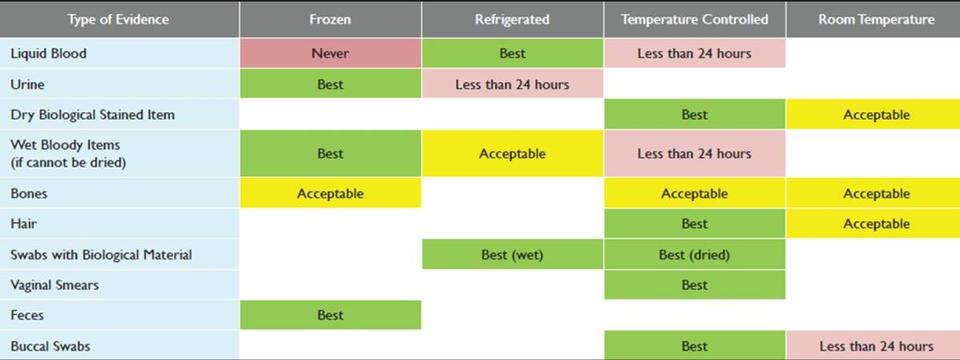
Long-Term Storage Conditions
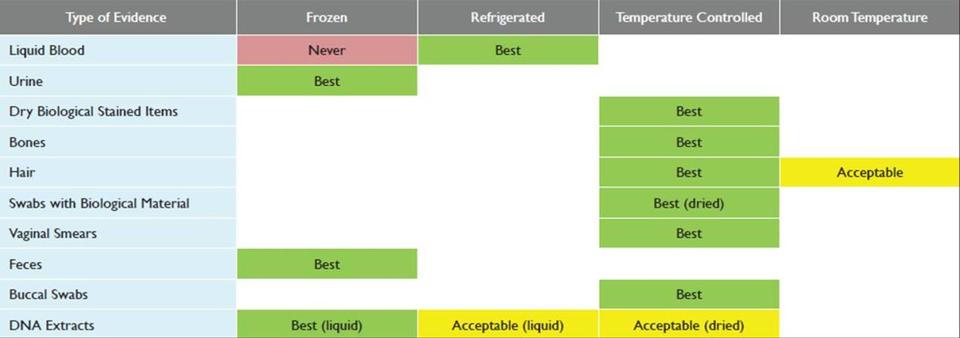
Considerations for Storage of Bulky Evidence
|
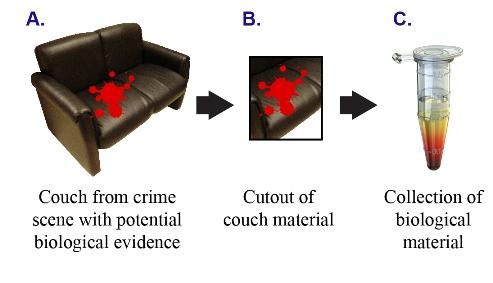
|
For the long term, agencies might find it sufficient to retain samples taken from a large item (see B. and C. in the above figure) as opposed to the large item on which biological evidence may have been located (see A.). If the origin of a sample is well documented (such as through photographs or case files), it may not be necessary to store the large item for testing and future re-testing.
Appropriate Packaging Equipment, Materials, and Guidelines
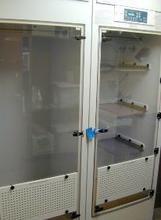
|
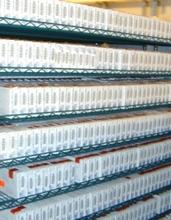
|
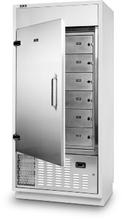
|
| Images: IAPE |
See our Biological Evidence Resource Library for more information.

